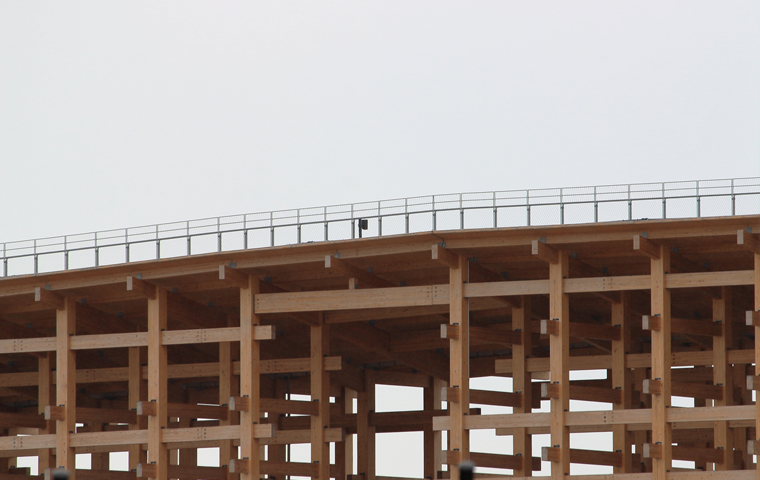The Future Beyond the Clamor: Osaka Expo—184 Days of Light and Shadow
Related Articles
A Finale of Euphoria and Gratitude: The Dream Seen by 25 Million Comes to an End
On October 13, 2025, the artificial island of Yumeshima in Osaka Bay was filled with the excitement and emotion of people reluctant to see the six-month festival end. On the final day of the Osaka–Kansai Expo, the venue was packed with visitors eager to etch one last memory before closing. The scene spoke powerfully to its overwhelming success—so much so that it made the pre-opening skepticism that once gripped Japan seem almost unbelievable.
The closing ceremony was held solemnly at the EXPO Hall “Shine Hat.” Its theme, “For the Futures,” conveyed a message of sending off everyone involved with words of thanks and praise toward “the beginning of each person’s future.” During the ceremony, the BIE flag was handed over to the next host country, symbolizing the continuity of this global celebration.
Taking the stage, the prime minister recalled the opening-day pledge six months earlier—“Japan will once again offer a stage for the world’s people to engage in dialogue and exchange”—and concluded that, true to the message embodied by the Grand Roof Ring—“many and diverse, yet one”—the Expo became a venue of exhilarating, dreamlike encounters. The prime minister declared that the Expo had successfully served as a stage to present a “new Japan” to the world.
The speech that most symbolically captured this success came from Osaka Governor Hirofumi Yoshimura, who repeated the word “thank you,” offering gratitude to everyone who supported the Expo: the 30,000 volunteers who kept smiling through scorching heat and rain, the security staff who kept the venue safe, the medical workers who protected visitors’ lives and health, the overseas participants, and each member of the operations staff. Finally, bowing deeply to the nearly 28 million visitors and to the Japanese public whose support made the event possible, he said, “We were able to carry out this Expo because of your support and your participation.” This sustained expression of thanks went beyond protocol; it carried a clear intent to cement the memory that the Expo overcame pre-opening criticism and concern to become a national success.
The figures backed up those words. Total attendance exceeded 25 million, surpassing the roughly 22.05 million of Expo 2005 Aichi and ranking second only to the legendary Expo ’70 Osaka among international expositions held in Japan. Moreover, the Expo Association announced a projected operating surplus of ¥23–28 billion, silencing fears of fiscal ruin.
The venue on the final day embodied what people called “Expo loss”—the empty feeling after a great event. Devoted repeat visitors who came more than 15 times and guests tearfully bidding farewell to favorite pavilion staff could be seen throughout. That night, the JR West Group hosted the final event, “A Festival of Thanks and New Departures,” where performances by popular artists and traditional arts colored the last evening, bringing the 184-day dream to a grand close. For organizers, this feverish finale was also the completion of a “redemption story” after overcoming the pre-opening turmoil.
Obstacles That Put the Event at Risk—Budget Blowouts and Safety Concerns

Despite the euphoric finale, the road to the Osaka–Kansai Expo was thorny. Problems serious enough to jeopardize the event’s very feasibility surged one after another, and for a long time anxiety and criticism outweighed public expectation. At the center of the turmoil was the ever-swelling budget.
Originally estimated at ¥125 billion, the venue construction cost rose to ¥185 billion, and ultimately to ¥235 billion—nearly double the initial plan—due to surging material and labor costs. Including related infrastructure improvements, some estimates suggested total public expenditures reaching into the trillions of yen, sharpening public scrutiny of the massive price tag.
The symbol of this budget expansion—and a lightning rod for criticism—was the wooden Grand Roof Ring, the venue’s emblematic structure. Costing about ¥34.4 billion, it was not part of the original plan and was derided by some as a “world-class symbol of waste.” The fact that it was slated for demolition after only half a year added fuel to the criticism.
Alongside fiscal issues, an even graver crisis unfolded on site: severe delays in constructing foreign pavilions. With Expo 2020 Dubai postponed a year by the pandemic, Osaka effectively had only three years to prepare—an unusually short window. That, combined with global material inflation, a chronic labor shortage in Japan’s construction industry, and new overtime regulations from April 2024, meant many countries failed to secure contractors; even by mid-2024, several pavilions had not broken ground. The chaos prompted withdrawals by some participants, including Mexico and Russia. In the rushed work that followed, construction sometimes proceeded without formal contracts, leading to unpaid subcontractor bills and a cascade of negative effects.
Then came an incident that shook confidence in safety itself. In March 2024, a methane gas explosion occurred in a public restroom under construction. No one was injured, but the accident highlighted that Yumeshima is a landfill built on a final waste disposal site. Subsequent investigations revealed repeated detection of methane concentrations above evacuation thresholds, raising a fundamental question: Could the safety of tens of millions of visitors be guaranteed? This series of problems was not a mere string of bad luck; the short preparation period collided with macroeconomic shifts and domestic structural issues, producing a chain of systemic failures. Criticism of the Grand Roof Ring was simply the most visible symbol of these complex structural challenges.
How the Headwinds Were Reversed—Compelling Fusions of Future Tech and Culture
So how did an Expo that was nearly branded a failure attract 25 million people and end in rapture? The answer lies in the overwhelming experiences delivered by individual pavilions—experiences powerful enough to flip the negative narrative. Rather than merely stating abstract themes, the Expo succeeded by engaging visitors’ senses and emotions.
Leading the way was the Italy Pavilion, which drew long lines every day. More like a world-class museum than an Expo pavilion, it displayed treasures such as Michelangelo’s “Risen Christ” and Leonardo da Vinci’s “Codex Atlanticus,” offering the rare chance to view originals up close and captivating countless visitors.
The GUNDAM NEXT FUTURE PAVILION pulled visitors in with entertainment. Its attraction, structured as a story about traveling to a space station via an orbital elevator, delivered theme-park-level immersion enjoyable even for non-fans. Cutting-edge visuals and motion effects created pure excitement and wonder, transforming the venue into a world apart.
Offering deep emotion and philosophical reflection, the signature pavilion “The Future of Life,” produced by android pioneer Hiroshi Ishiguro, presented a story set fifty years from now about a girl and her grandmother coexisting with androids, asking “What is life?” and “What does it mean to be human?” Many visitors were moved to tears. This was not mere technology showcase—it was a superb experiential design that let people feel both the light and shadow of a tech-shaped future as a personal story.
What these pavilions shared was success not in explaining the official theme, “Designing Future Society for Our Lives,” but in making each visitor experience it—through the solemnity of art, the exhilaration of entertainment, and the emotional pull of storytelling. Such powerful experiences fueled word of mouth and drew people to Yumeshima.
The Expo’s “future” was made most tangible by the demonstration flight of a flying car. ANA Holdings and U.S. firm Joby Aviation jointly flew the electric vertical takeoff and landing aircraft Joby S4, a highlight in the closing weeks. The sight of future mobility gliding quietly over the venue felt like science fiction made real, leaving a strong impression on many.
However, the quality of those experiences was not equal for everyone—especially visitors from overseas, for whom operational issues remained. On social media, praise for the Grand Roof Ring’s beauty and for pavilions like France and Saudi Arabia contrasted with eruptions of frustration over the infamous “queue hell” and the complex lottery/booking system required to enter popular pavilions. On Reddit, some harsh comments appeared—“The official website was a nightmare; reservations felt like navigating a bureaucratic maze”—highlighting a gap between Japanese event-management norms and international expectations. In short, while the Expo ended in success, it still left challenges in experience design as a truly global event.
After the Festival: Yumeshima’s Future—The IR Plan and the Expo’s Legacy

As the 184-day festival ends and quiet returns to Yumeshima, the island’s real transformation is just beginning. The Expo was both an end in itself and a grand prologue to a larger, permanent national project. The true legacy lies not only in memories of pavilions but in the future of the island itself.
In the short term, the Expo’s economic impact on the region was substantial. Including venue construction, infrastructure development, and visitor spending from Japan and abroad, the total ripple effect is estimated at around ¥3 trillion. During the Expo, Osaka’s hotels recorded historic occupancy rates, and restaurants, transport, and retail thrived—serving as a major catalyst for the Kansai economy, long seen as stagnant.
With the closing of the Expo, Yumeshima now moves to its next stage: construction of Japan’s first full-scale integrated resort (IR) with a casino. Led by MGM Resorts International, this massive project aims to open around 2030, with full-scale construction beginning after the Expo site is dismantled. Plans call for a complex with about 2,500 hotel rooms, an international conference center, exhibition halls, and a theater, drawing over 20 million visitors annually and generating over ¥1 trillion in economic impact.
Seen in this context, the Expo’s position looks different. Yumeshima had large tracts of unused land and underdeveloped transport infrastructure. The Expo extended the subway, improved roads, and gave the island global name recognition—all indispensable groundwork for the IR plan. In effect, it was Phase One of a public national project funded with large sums of public money, whose infrastructure and brand value will now be inherited by a private, large-scale commercial project.
Debate over the fate of the Expo’s symbol, the Grand Roof Ring, epitomizes this transition. Initially slated for demolition, a surge of public support—“It should remain as a legacy like the Tower of the Sun from Expo ’70”—pushed consideration of partial preservation. Yet a major question looms: who will bear the enormous maintenance costs? The discussion mirrors the tension between citizens who wish to preserve the Expo’s memory as a public heritage and business interests seeking to maximize commercial use of the site.
In conclusion, the 2025 Osaka–Kansai Expo will likely be remembered as a national success that overcame multiple pre-opening crises. But its historical significance extends beyond the 184 days. The Expo served as the decisive catalyst to transform Yumeshima into Osaka’s new hub of economy and entertainment. When the planned IR facilities fully demonstrate their value, the Expo’s greatest legacy may not be the transient brilliance of its pavilions, but the enduring fact that it laid the foundations for long-term urban development.



